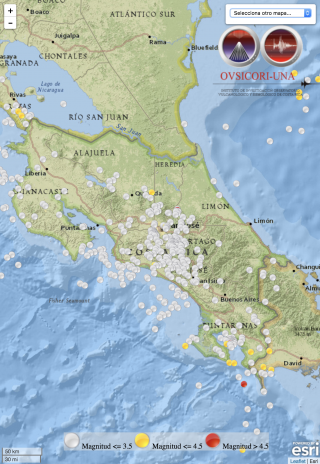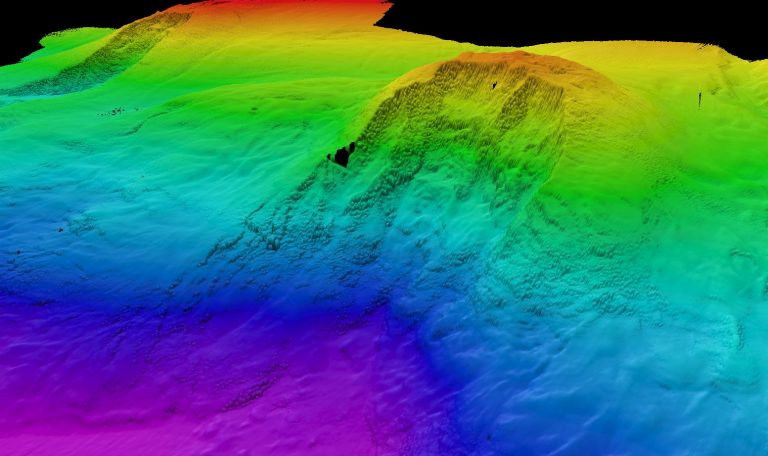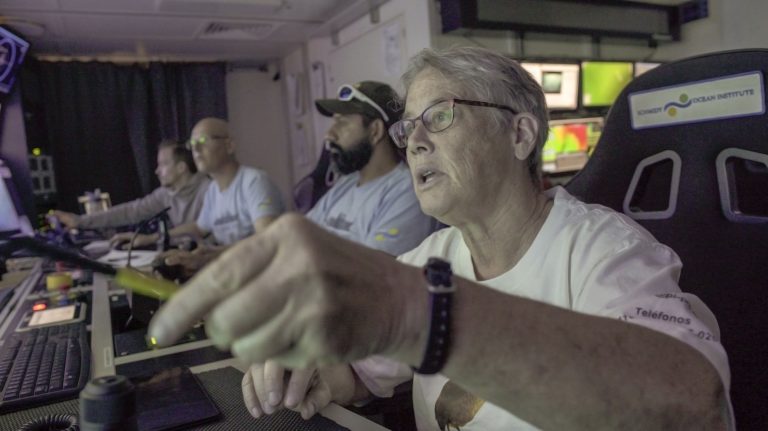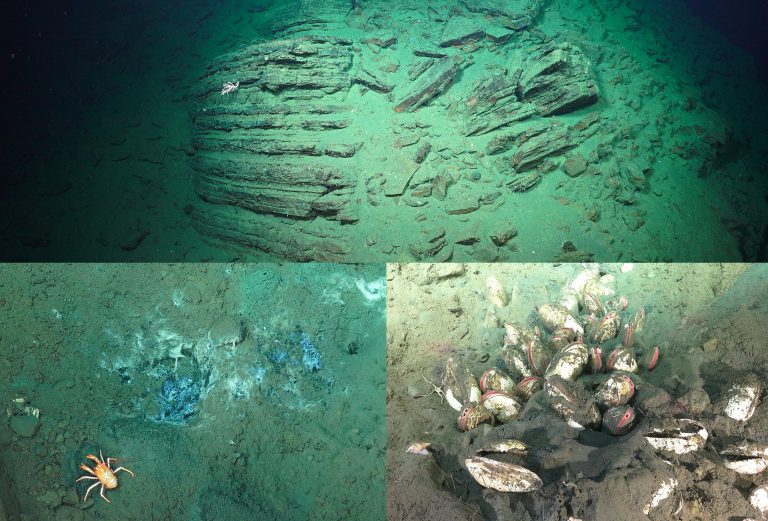“Cocos” and “Caribe” are two words that, when combined, carry a very specific meaning for any Costa Rican. Those are the names of the tectonic plates that have kept the country on guard for the longest time. During the month of November alone, Costa Rica experienced 62 earthquakes. The subduction of the Cocos plate under the Caribe has created Costa Rica’s imposing mountain range and multiple microclimates, a landscape that is no less dramatic underwater.

A Hungry Python
For Dr. Peter Vrolijk, a geologist on board, one of the most interesting aspects of the subduction zone Falkor is currently sailing over is the deformations created by the seamounts that are being subducted. “It’s basically like a python swallowing an animal, and you see the shape of that animal going through the body of the python as it digests it,” he explains. As the large seamounts on the subducting Cocos plate are swallowed by the overriding Caribe plate, they leave visible scars on the surface, like stretch marks. One such scar was the focus of ROV SuBastian’s 202nd dive: the Parrita scar.
The researchers chose this location due to some very steep cliffs they identified on the bathymetric maps. “We haven’t really explored this place at all,” explains Dr. Lori Summa, a geologist. “We are here because we think that we might see some evidence of fracture that might promote fluid flow.”

Nature’s Chaos
SuBastian’s exploratory dive is all about working alongside nature’s forces with a humble attitude. This is also true for the scientists as they begin to put together some preliminary theories about the scar, and extends also to Falkor’s Officers maneuvering the ship.
Since the ship is not round, currents and wind apply forces on the ship, which are dependent on where she is facing: her heading. In order to comfortably deploy SuBastian and keep a safe distance from its umbilical cable, the Officers need to choose a heading where the effect from forces is minimal. “Generally, we first identify which force is stronger, and face that one while we adapt the heading based on the second force,” explains Phillip Guenther, one of Falkor’s Captains. Today, neither force is particularly stronger than the other, and ironically the genial Costa Rican weather makes things a little more challenging. “It is easier if you have a clearly dominant force and you can adjust everything according to it.” However, this situation is nothing new for Falkor’s experienced crew, and the dive takes place as planned. As the exploration goes on, the ROV team sends waypoints to the ship’s bridge, maintaining a constant distance between Falkor and SuBastian.
Back in the Control Room, a chaotic landscape fills the screens. Corals, sponges, sea stars, spiders, skate fish, anemones, tube worms, and fish all make an appearance amid a mixture of fractured rocks and steep inclines. “The fracture rock tells us that there was probably stress and fluid flow associated. The combination of the fluid pressure and the lack of strength of the rocks signals that some pretty dramatic stuff happened here,” says Dr. Summa.

Patience and Stubbornness
The geologists are essentially detectives: they look for clues in order to build a comprehensive and sensible story. Attention to detail is key, but this does not necessarily mean that the geological structures here are subtle. SuBastian flies around Volkswagen-sized blocks of coherent rocks and inclined bedding. In undisturbed circumstances, these layers of sedimentary rocks would run horizontally, yet the abrupt angles of these rocks signal landslides. Dr.Vrolijk is struck by the shear number of fractures.
Dr. Summa spots a group of clams scattered on the seafloor, so the team approaches to take a closer look. Clams and bacterial mats indicate seeps. Yet today, the team finds no obvious carbonates, but evidence of small and deeply localized seeps. One thing is for sure: this is a highly active tectonic place that has experienced an enormous amount of disturbance. Figuring out exactly how every rock got to be where it presently lays, will take a lot more time.


